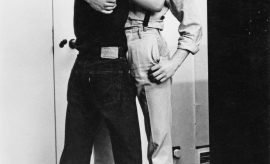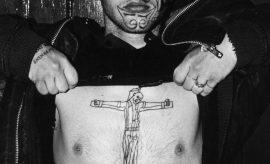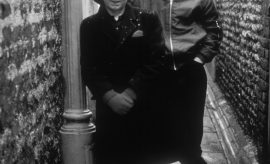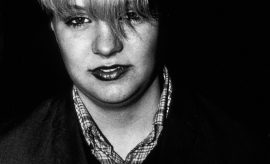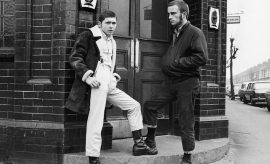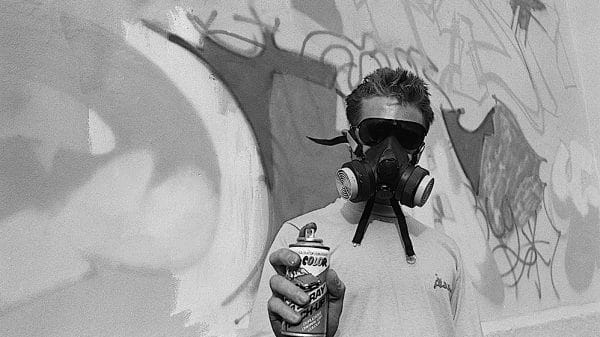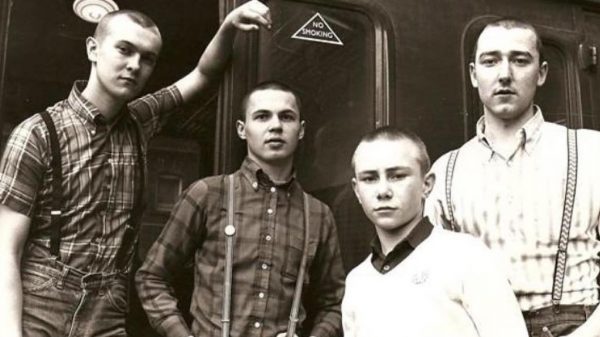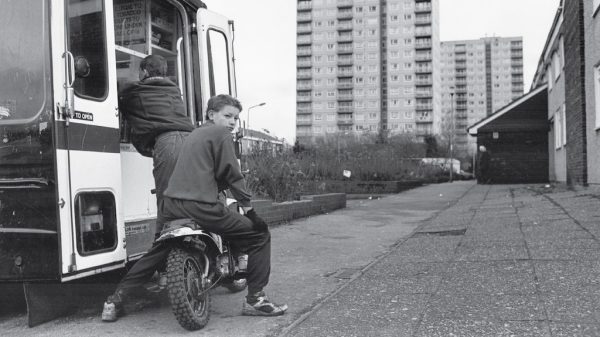Via Mashable
The skinhead subculture first emerged in London in the mid-1960s, when a split developed among “mod” music fans.
While more affluent mods could afford the fashionable clothes, scooters and amphetamines that typified the subculture, working-class mods had to make due with with more functional attire.
These “hard mods” often lived in the same poor neighborhoods as Caribbean immigrants, exposing them to the fashions and sounds of soul, ska and reggae.
Finding more interest in black culture and music than the effete mod subculture, the hard mods adopted a uniform of work boots, short jeans or pants, simple shirts, suspenders and close-cropped hair. (Long hair was a liability in factory work and street fights.) They soon began referring to themselves as “skinheads.”
Skinhead culture faded in the early ‘70s, but revived as a response to the commercialization of punk at the end of the decade. At the same time, many skinheads became involved in far-right and racist politics.
Some factions of skinheads had previously been known to attack immigrants and gay people in addition to their usual brawling; now many were openly sporting swastikas and giving Nazi salutes.
By the mid-1980s, the term “skinhead” had become synonymous with neo-Nazism, fascism and xenophobia.
Today a few organizations, such as Skinheads Against Racial Prejudice, are attempting to fight back against white supremacist skinheads and honor the multicultural origins of the subculture.
- A teenage skinhead couple, 7th February 1970. (Photo by Keystone Features/Hulton Archive/Getty Images)
- Filename: NO BARCODE?Photo Studio, ?Science Museum, London ?Scan Date: 19/04/07?Colour Profile: Adobe RGB (1998) ?Gamma Setting: 2.2 ?Please note: This image is currently not fully processed.
- UNITED KINGDOM – JANUARY 01: Photo of SKINHEADS (Photo by Caroline Greville-Morris/Redferns)
- Skinhead with facial tattoo lifting up his top to reveal a ‘skinhead on the cross’ tattoo on his chest. (Photo by: PYMCA/UIG via Getty Images)
- Skinhead couple, man with his arms round womans shoulder. (Photo by: PYMCA/UIG via Getty Images)
- A Skinhead, gesturing to camera, Electric Ballroom, London, UK, 1980’s. (Photo by: PYMCA/UIG via Getty Images)
- Paul Hartnett portrait. Dressed as a skinhead with Doc Martin boots and Fred Perry shirt, UK 1980’s. (Photo by: PYMCA/UIG via Getty Images)
- Skinhead girl wearing Fred Perry Polo Shirt, London 1980’s. (Photo by: PYMCA/UIG via Getty Images)
- Portrait of a young skinhead boy, Woolwich, London 1981. (Photo by: PYMCA/UIG via Getty Images)
- Portrait of a young skinhead boy, Woolwich, London 1981. (Photo by: PYMCA/UIG via Getty Images)
- UNITED KINGDOM – JANUARY 01: Photo of 80’S STYLE and 70’S STYLE and SKINHEADS; Interviews for New Sounds New Styles (Photo by Virginia Turbett/Redferns)
- Nipper and Kenny, Skinhead boy and girl, Brighton, UK 1983. (Photo by: PYMCA/UIG via Getty Images)
- Two skinhead girls, wearing England T shirts, denim, leather bracelet at an arcade in Brighton, UK 1985. (Photo by: PYMCA/UIG via Getty Images)
- A skinhead couple wearing Union Jack T-shirt, flying jacket, Ben Sherman shirt, badges, cropped hair, tattoos, drinking beer and smoking at an arcade in Brighton, UK 1985. (Photo by: PYMCA/UIG via Getty Images)
- Skinhead portrait, London, U.K, Early 1980’s. (Photo by: PYMCA/UIG via Getty Images)
- Skinhead portrait, London, U.K, Early 1980’s. (Photo by: PYMCA/UIG via Getty Images)
- Skinhead portrait, London, U.K, Early 1980’s. (Photo by: PYMCA/UIG via Getty Images)
- A skinhead couple embracing, Brighton 1983. (Photo by: PYMCA/UIG via Getty Images)
- Kenny, a young skinhead standing in an alley way wearing cherry red Dr Marten boots, Brighton, UK 12th Feb 1983. (Photo by: PYMCA/UIG via Getty Images)
- UNITED KINGDOM – JANUARY 02: Two British SKINHEADS wearing their usual shoes before their locale in London in 1970. (Photo by Keystone-France/Gamma-Keystone via Getty Images)
Spotted on Dangerous Minds


